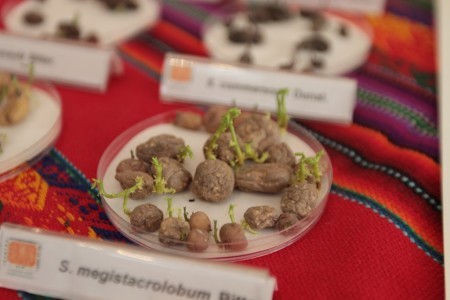By Ana Verayo, | April 03, 2017

Potatoes are clonally propagated, meaning that potatoes leftover and chosen from the recent harvest are saved for the next planting season. The potatoes saved are genetically identical to the potatoes planted the season before.
Scientists from Peru suggest that potatoes can be the key to supporting human life on Mars. In a new study, researchers were able to grow a small potato plant simulator that can duplicate the harsh environment and conditions on the Red Planet.
This simulator can mimic frigid below zero temperatures, high concentrations of carbon monoxide and extreme pressures similar to experiencing an altitude of 19,700 feet. This simulator also recreates Martian daytime and night time.
Like Us on Facebook
According to astrobiologist Julio Valdivia from the University of Engineering and Technology in Peru who is also working with NASA's Ames Research Center, this experiment is not just about bringing potatoes to Mars but also growing and cultivating them on arid and remote areas on Earth.
Potatoes first became cultivated for food in the Andes near Lake Titicaca, around 7,000 years ago. Now, there are 4,000 kinds of potatoes grown in the region, not just Peru, but also in Bolivia and Ecuador where potatoes can even thrive in cold and dry lands.
Mars possesses high salinity soil and scientists were able to find similar soil in Pampas de la Joya in Peru's southern coast. This land receives less than one millimeter of rain every year, making this the ideal soil specimen comparable to Martian soil.
For these experiments, the International Potato Center transported 1,540 pounds of this soul to Lima and plant 65 varieties of potato. Results revealed that only four types can subsist in this arid soil. Next stage of the experiment consists of scientists planting one of those that survived inside the simulator along with the same dry soil. Since Mars possessed no organic soil, this is replaced with crushed rocks and a nutrient solution.
Scientists are still closely monitoring every movement and growth stage of this bud that later on grew several leaves. Sensors also provided real time monitoring within simulator conditions.
This surviving potato is called "Unique" as this super potato can resist high carbon dioxide conditions and freezing temperatures says, Valdivia. According to Ray Wheeler from NASA's Kennedy Space Center, this plant survival is crucial for Martian conditions like lack of oxygen, cold temperatures and extremely low pressures. By exposing plants to greenhouse types of environments, this can reduce operating costs since most research about growing plants in space focuses on optimal environments to produce ideal oxygen levels and food.
-
Use of Coronavirus Pandemic Drones Raises Privacy Concerns: Drones Spread Fear, Local Officials Say

-
Coronavirus Hampers The Delivery Of Lockheed Martin F-35 Stealth Fighters For 2020

-
Instagram Speeds Up Plans to Add Account Memorialization Feature Due to COVID-19 Deaths

-
NASA: Perseverance Plans to Bring 'Mars Rock' to Earth in 2031

-
600 Dead And 3,000 In The Hospital as Iranians Believed Drinking High-Concentrations of Alcohol Can Cure The Coronavirus

-
600 Dead And 3,000 In The Hospital as Iranians Believed Drinking High-Concentrations of Alcohol Can Cure The Coronavirus

-
COVID-19: Doctors, Nurses Use Virtual Reality to Learn New Skills in Treating Coronavirus Patients







